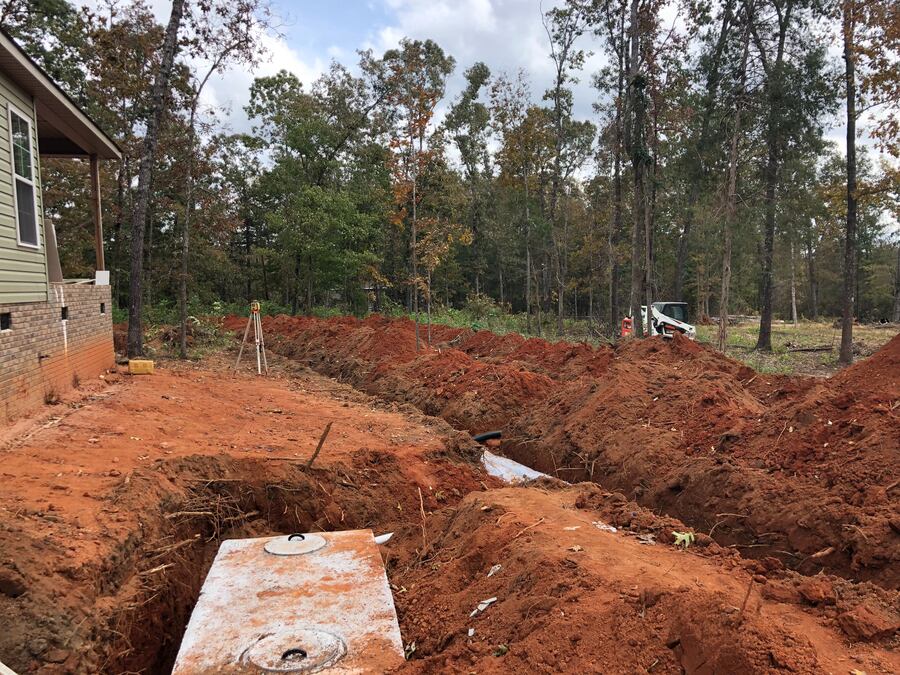Call This Thursday to Get $25 OFF
Clean Solutions, Dirty Jobs – Done Right. Reliable. Responsive. Remarkable.
Call This Thursday to Get $25 OFF
Clean Solutions, Dirty Jobs – Done Right. Reliable. Responsive. Remarkable.
Concrete septic tanks are the most common types used in residential and commercial properties. Known for their durability and longevity, these tanks can last several decades with proper maintenance. However, like all systems, they are not immune to issues. Even after a successful septic tank installation, concrete septic tanks can develop cracks, leaks, and other damage over time, prompting professional intervention. In such cases, Septic Connection is the go-to septic company to ensure optimum performance and longevity. As a homeowner, understanding the common problems and knowing when and how to address them is crucial for maintaining a healthy septic system.

While concrete wastewater treatment systems are sturdy, they are susceptible to problems that require the expertise of a professional septic company in Greenville. Cracks are a significant concern, often caused by natural ground movements, tree roots, or the natural aging process of the concrete itself. These cracks cause leaks, which can contaminate the surrounding soil and groundwater. In addition, the system's internal components, such as baffles and pipes, can deteriorate or become clogged, compromising the system's functionality. Addressing these issues promptly is essential to prevent more significant damage and costly septic tank repair emergencies.
Detecting damage early in a concrete septic system is advisable to save you from extensive repairs, potential health hazards, and premature septic tank installation projects. Some common signs of septic tank damage include foul odors around the property, slow drains, and unusually green patches of grass above the septic area. You might notice sewage backups or pooling water near the tank in more severe cases. Regular inspections by a septic company can help catch these issues early, but homeowners should also be vigilant for these signs in their daily routine.
Timely repairs and maintenance, like septic tank pumping, are critical to maintaining the system's efficiency and preventing environmental contamination. Ignoring cracks or leaks can worsen over time, causing more significant structural damage and potentially causing the entire system to fail. Besides the cost of replacing a septic tank, untreated issues can lead to soil contamination, affecting local water sources and posing a risk to public health. With that in mind, prompt action is necessary when you detect any signs of damage.
The septic system is an onsite waste treatment facility, and it is incredibly reliable. However, the system is only as effective…
Imagine flushing your toilet and then suddenly realizing that your backyard has turned into a swampy mess. This unpleasant experience is…
Soil testing is a critical step in various construction and environmental projects. It provides essential information about the ground conditions, which…
Grease traps are remarkable tools that help keep your establishment clean and free from bad odors. Septic Connection has a…
If you have just moved into a new home or property that relies on a septic system for waste and wastewater…
Repairing a concrete septic tank involves several techniques, depending on the nature and extent of the damage. For minor cracks, you can inject epoxy or other sealants into the cracks to prevent leaks. A concrete patch or liner might reinforce the tank's structure in more severe cases. Internal component repairs, such as replacing broken baffles or unclogging pipes, may be necessary to restore the tank's functionality. Hiring a professional with experience in wastewater treatment systems is essential to handle everything from minor repairs to septic tank cleaning sessions, ensuring everything runs correctly and safely.
Taking preventative measures such as septic tank cleaning can significantly extend the lifespan of a concrete unit and reduce the frequency of repairs. Also, homeowners should be mindful of what goes into the septic system, avoiding non-biodegradable materials and harsh chemicals that can damage the tank or disrupt the bacterial balance necessary for waste breakdown. Landscaping practices also play a role; keeping large trees away from the septic area can prevent root intrusion, a common cause of cracks.
Maintaining and repairing a concrete septic tank is essential for the longevity of the system and the safety of your property and environment. Contact us at Septic Connection and schedule a consultation with our experts to ensure optimum efficiency and longevity. Investing in these practices and routine septic tank pumping protects your home and contributes to your community's overall health and safety.
A septic tank backup is one of the most unpleasant and disruptive problems a homeowner can experience. Slow drains, sewage odors, or wastewater backing up into sinks and toilets are…
Read moreBuying a home with a septic system can feel intimidating if you’ve never had one before. Unlike city sewer systems, septic systems rely on regular care and professional service to…
Read more